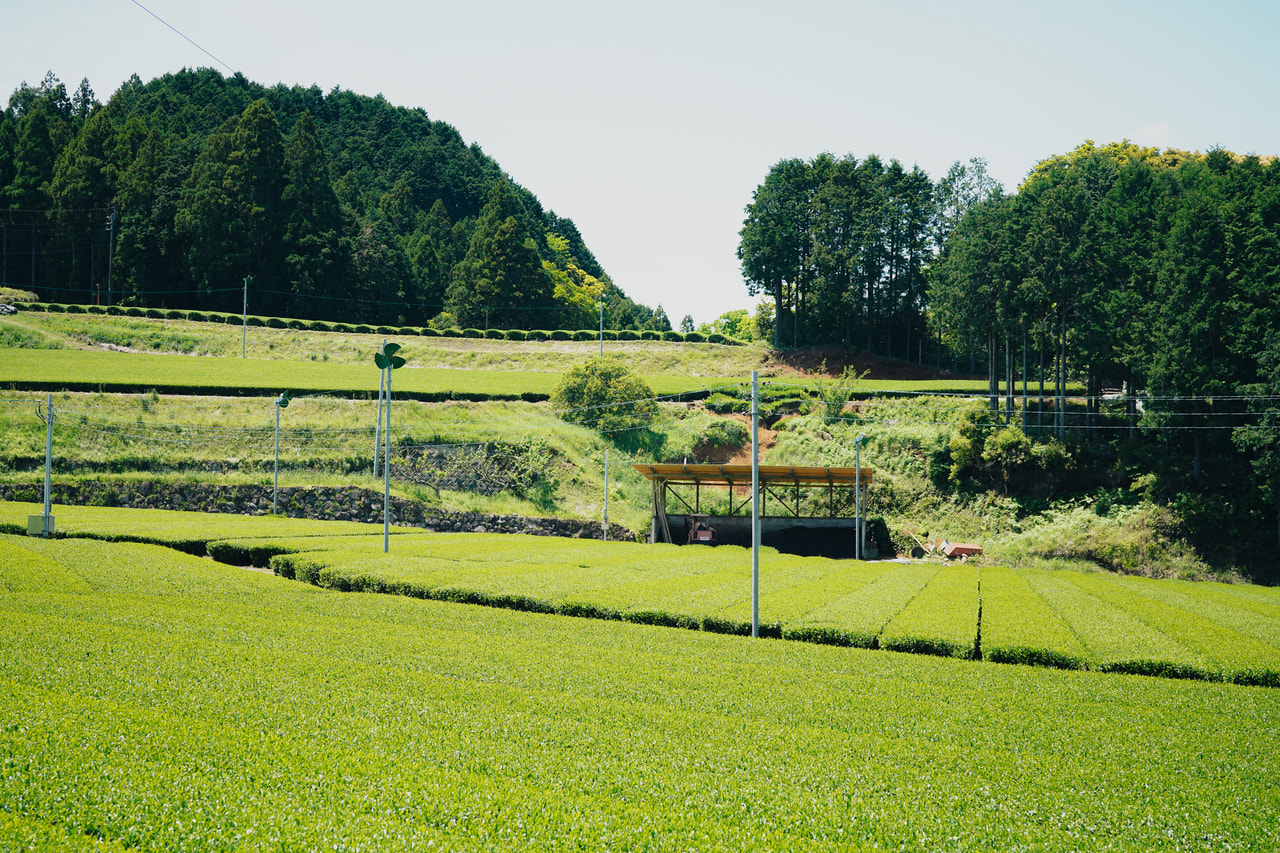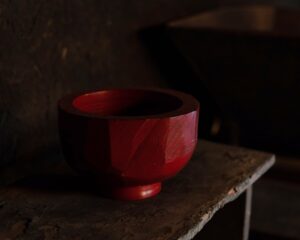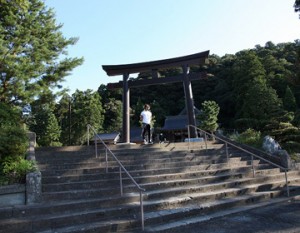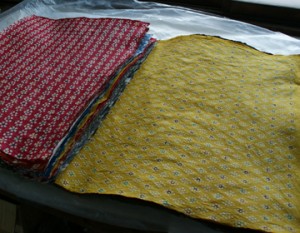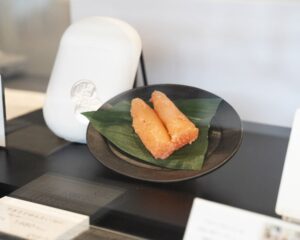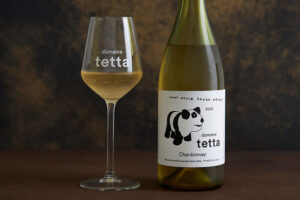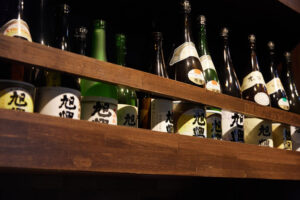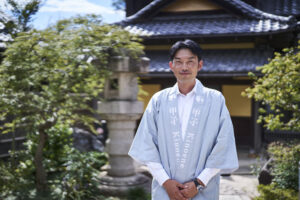Nihonmono, a project to promote Japan’s world-class traditional culture, has traveled to a number of tea-producing regions. The Nihonmono Store carries tea, tea utensils, tea sets, and other excellent products that the project has encountered on its travels. In this article, we will introduce some of the rare teas featured in Nihonmono, as well as a ranking of the most popular tea-related products in the Nihonmono Store. We hope you will find it useful in selecting a gift or as a hint for your own tea time.
Nihonmono visits teas from all over Japan
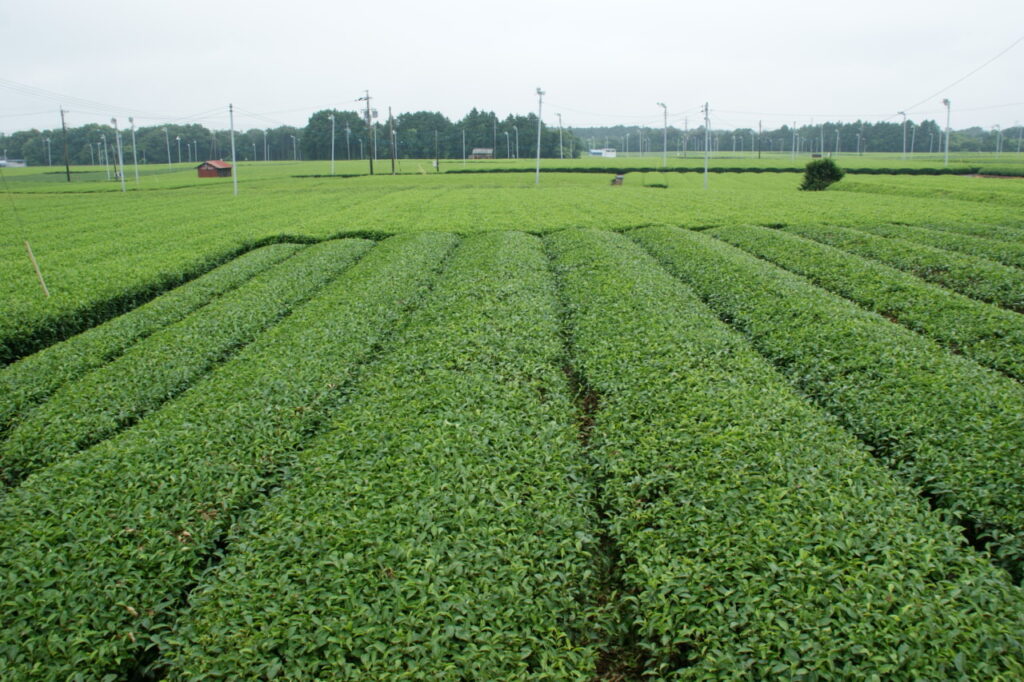
Many Japanese people drink tea on a daily basis. Tea comes in a variety of flavors, including green tea, which is widely familiar to Japanese people, black tea, and oolong tea. Japanese tea is now attracting attention from overseas as well, as Japanese tea exports will reach a record high in 2021.
Nihonmono” has visited a number of tea-producing regions in Japan, focusing on the people involved in tea production. We have interviewed a variety of people, including tea farmers who grow tea leaves and tea merchants who process and sell tea leaves.
The following are the articles on “tea” that we have introduced so far. We hope you will use them as hints for finding tea you would like to try.
Shizuoka Prefecture
-
Tea making that spares no effort “Kawane Tea, Takada Farm”
-
Retaining “that taste” “Hatsukura Aged and New Tea Agricultural Coop”
-
Locally grown black tea in the country of green tea ”Maruko Black Tea”
-
Tasting raw green tea and “aracha” “Tea farmer, Shoji Mochizuki”
-
Making tea more delicious “Tea master, Fumio Maeda”
Shiga Prefecture
Nara Prefecture
Kochi
記事が見つかりませんでした。
Rarity and locality are attractive. Rare teas that you will want to share with someone.
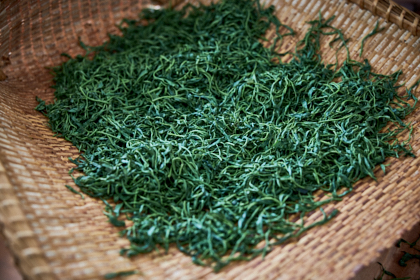
There are many ways to make and process Japanese tea. Some of them are rare and known only in the area.
Here, we would like to introduce some teas that you may want to tell someone about or that may deepen your interest in tea.
Precious hand-ripened tea with limited production due to the time and effort required to make it
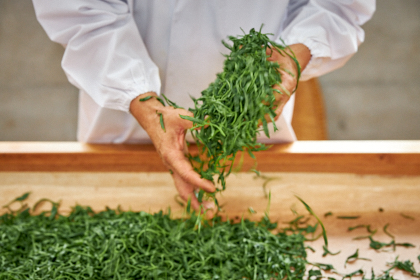
Te-momi tea” is literally made by drying the tea while kneading it by hand. Because of the time and effort required, the price of a kilogram of the highest quality tea can exceed 1,000,000 yen. Since no extra mechanical force is applied, the tea leaves remain in their original form and return to their original state when they are placed in hot water. This technique was originally introduced from China, and in 1738, Nagatani Soen, a tea farmer in Uji-Tawaracho, Kyoto, who is considered the father of Japanese green tea production, invented the idea. The tea was superior in taste, aroma, and color to conventional teas, and spread throughout the country, giving rise to various schools of tea making. Later, as the mechanization of the hand-rubbing process, in which a tea master works alone for five to six hours without a break, progressed, hand-rubbing tea declined. However, the technique continues to be handed down today, and the city of Iruma in Saitama Prefecture, known as the production center of Sayama tea, is famous for its high-quality hand-rubbed teas.
In Iruma City, there are “handmade tea legends” such as Yoshiaki Hiruma, the representative of Hirumaen Tea Studio, who is also the chairman of the National Handmade Tea Promotion Association and has received the Minister of Agriculture, Forestry, and Fisheries Award, the highest honor for tea masters, seven times.
In order to taste the tea, a few drops of hot water are poured over two or three sticks of handmomi-cha, and the “drops” are savored. When you put it in your mouth, you cannot believe that it is just a few drops, and the flavor and aroma fill your mouth. We hope you will try it for yourself and experience the strong umami that only those who have actually tasted it can understand, which is no less than that of a high-quality dashi broth.
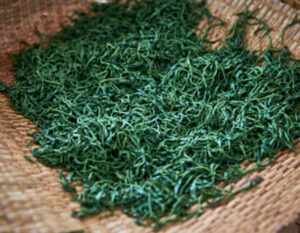
Other producers of hand-pulled tea introduced in Nihonmono
White leaf tea with a sweeter flavor than gyokuro. Tea utensils have also been developed.
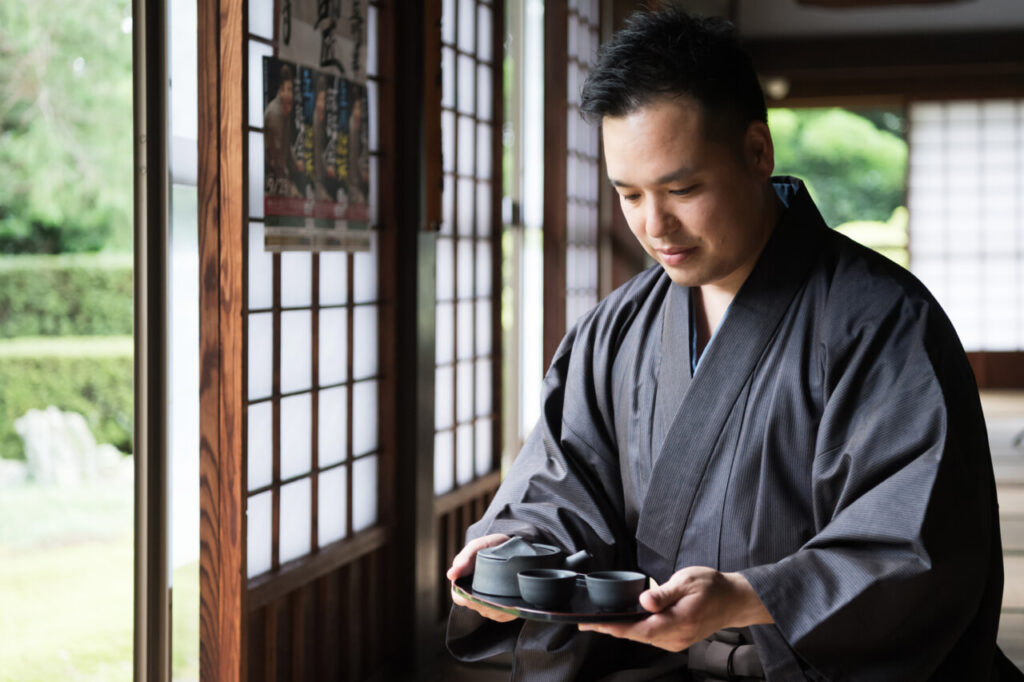
Amma Tea Co. in Fukuroi City, Shizuoka Prefecture, is focusing on the production of “Hakuha-cha” (white-leaf tea).
To minimize the transformation of theanine, a flavor component, into catechins, the tea trees are shielded from sunlight more than 99.99% of the time at specific times during cultivation. Shading from sunlight raises the content of amino acids, the source of sweetness, to about three times that of ordinary sencha and twice that of gyokuro, while catechins, the bitter component, are greatly reduced. It is difficult to cultivate and produce, and there are only a few tea growers, but Mr. Kosuke Amma, the third generation of the family, received the Minister of Agriculture, Forestry, and Fisheries Award for his research and presentation of this white-leaf tea.
Mr. Amma also devotes himself to making kyusu (teapot) and other tea utensils to enjoy the taste of tea. The materials used for these tea utensils were jointly developed with a local roof tile installation store, which developed a new approach using a special soil made from roof tiles. The carbon contained in the material has the property of absorbing caffeine and catechins, which inhibit amino acids, the source of flavor and sweetness, and thus enhances the flavor and sweetness of the “white leaf tea. Rare teas should be tasted more deliciously with a special tea container.
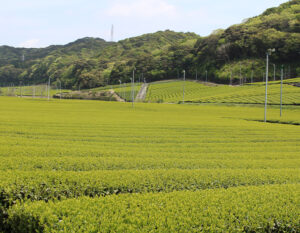
Steamed tama-yokucha is common in Kyushu. Commonly called “Guricha.
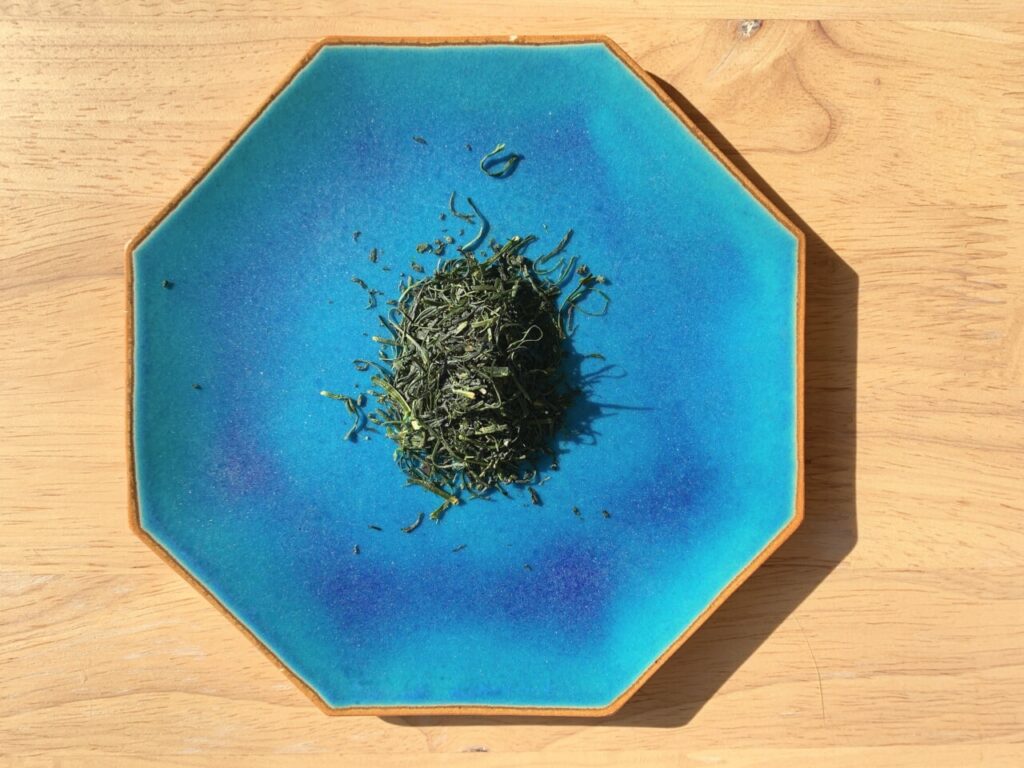
When talking about Japanese tea, many people may think of the thin needle-like leaves of sencha, but in the Kyushu region (excluding Kagoshima), steamed tama-marikyokucha, with its curved tea leaves, is often seen. This tea is made by steaming raw leaves at high temperature to stop fermentation, then rubbing them and drying them, resulting in a rounded shape. It is commonly called “guricha” because of its appearance. It is characterized by a mild flavor with a low astringency.
The name “steamed tama-yokuricha” comes from the fact that the tea leaves are curled up into a ball like kama-yori tea, which is said to have been introduced from China.
Originally, “Kama-iricha” was widely produced in Kagoshima and other Kyushu regions, and “steamed tama-ryokucha,” which is similar in production method, spread as an export product and became the second largest tea production area after Shizuoka.
Unzen tea, produced in the mid-mountainous area at an altitude of 50 to 200 meters at the foot of Mount Unzen, which rises in the center of the Shimabara Peninsula in Nagasaki Prefecture, is also steamed tama-green tea. Mr. Atsushi Nagata, a tea farmer in Mizuho Town, Unzen City, a part of this production area, and the third generation owner of Nagata Seicha, has developed a technique to produce “deep steamed tamaryokucha” with a longer steaming time than usual, and then roasts it in a kiln to enhance the aroma and produce a mellow green tea with a beautiful color. It would be interesting to compare the two teas.
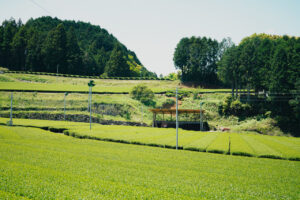
Recommended as a Gift – Popular Tea Sales Ranking in Nihonmono Store
The Nihonmono Store, operated by Nihonmono, offers high-quality teas produced by the producers we have interviewed. Here are the popular products in ranking form.
No. 1 Mizudashi Kaga-bo hojicha, Nihonmono Edition

Ishikawa Prefecture has developed as a famous tea-producing region since the Edo period. One of the famous brand-name teas of Ishikawa is Kaga-bojicha, which is made by roasting the stems of freshly harvested tea. It was first made by a tea merchant in Kanazawa during the Meiji period (1868-1912), and became popular due to its savory flavor and reasonable price.
Kaga-bo hojicha” is the specialty of Aburatani, a long-established tea shop in Hodatsushimizu-cho, Ishikawa Prefecture, and is made by lightly roasting Kaga-bo hojicha.
This product allows Kaga-bo hojicha to be brewed in cold water. It was jointly developed by “Ocha no Aburatani” and “Nihonmono Store” producer Hidetoshi Nakata to provide an option for those who prefer a cold drink when enjoying a meal, regardless of the season.
Ingredients are purchased only from contract farmers, and only tender stems are carefully selected. The roasting process uses far-infrared rays to create a shallow roast that maximizes the “sweetness” of the tea while retaining just the right amount of sencha flavor. Since a one-degree difference in temperature affects the flavor, fine adjustments are made according to the season. The representative of the company, Mr. Yusen Aburatani, himself performs strict checks at every step of the process. Kaga Bo-Hojicha, made by a long-established tea brewery, is a perfect match for any type of meal, and is sure to overturn the common image of stick tea.
No. 2 Sayama Junte Momocha
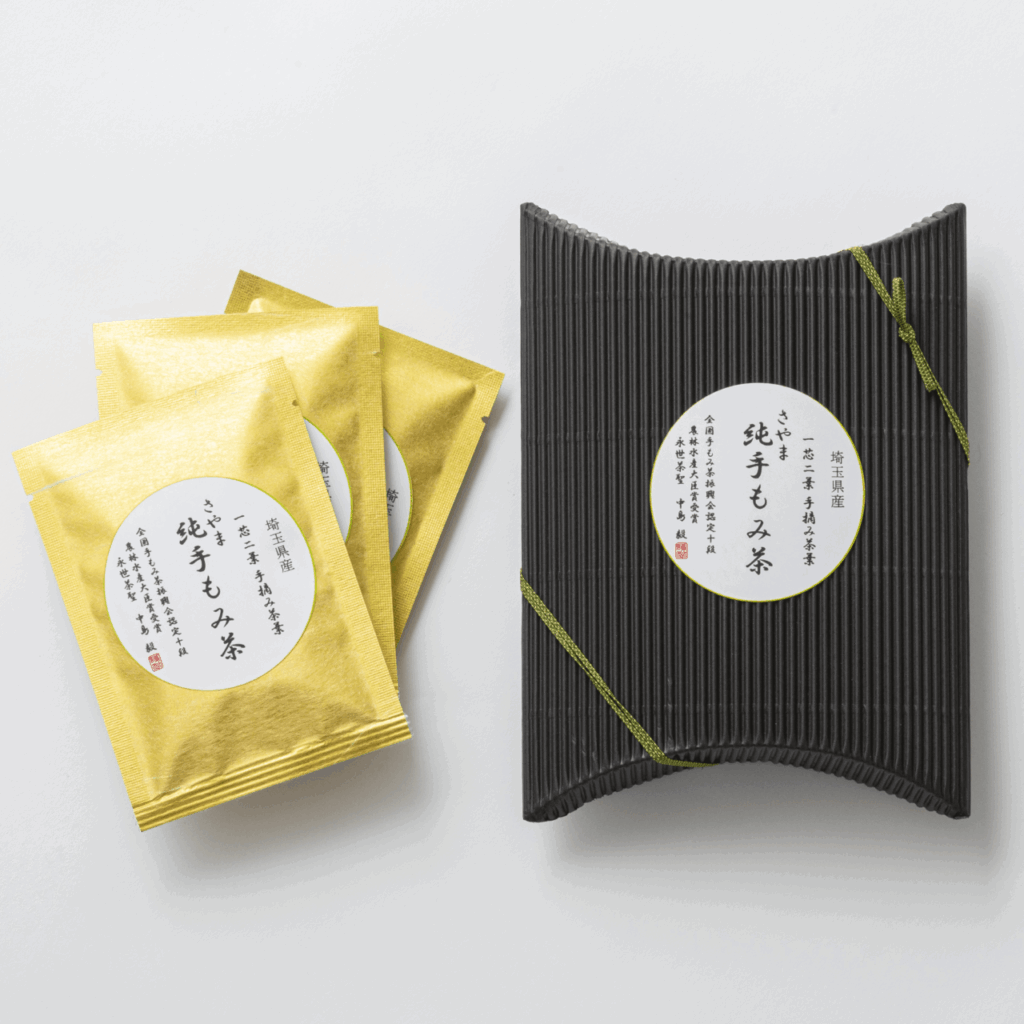
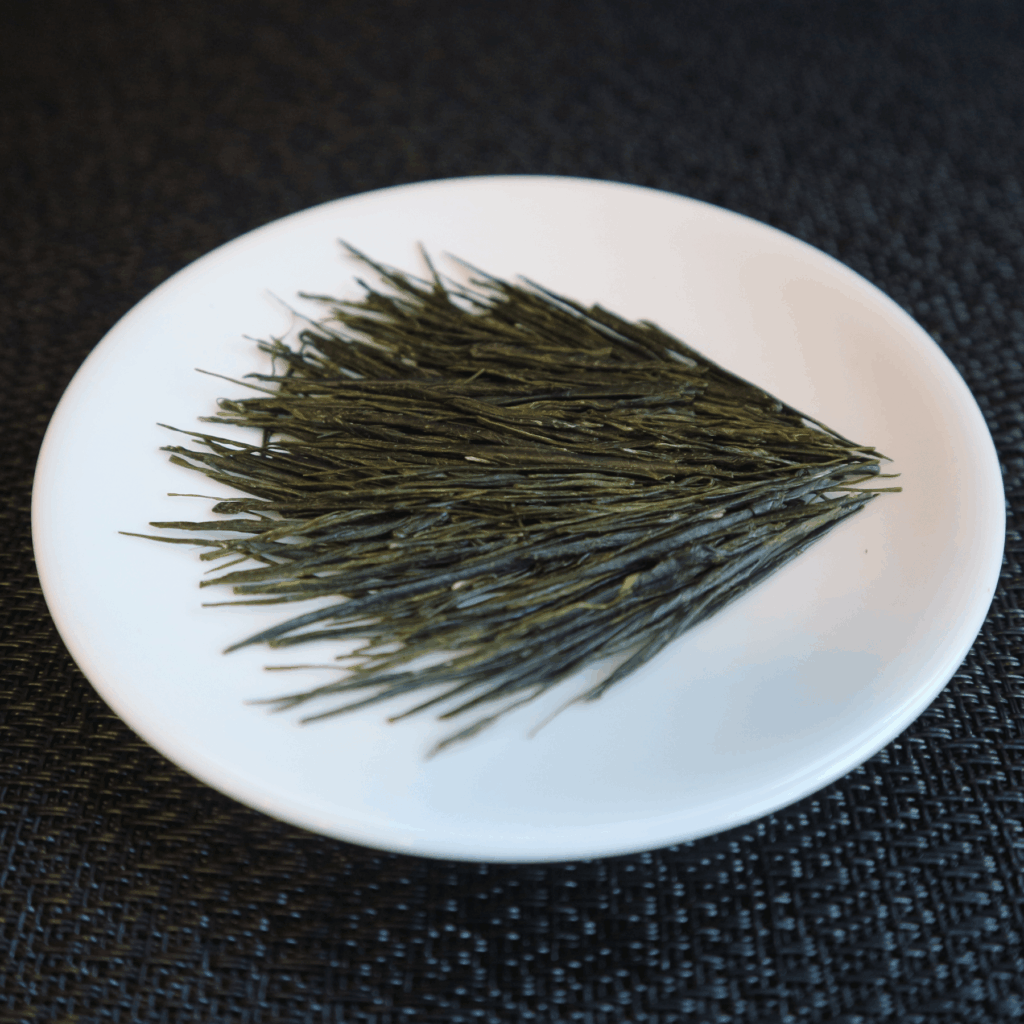
Sayama tea is one of the “three best teas in Japan. The Onishien Tea Factory in Iruma City, Saitama Prefecture, where Sayama tea is produced, is a green tea farm with a history of about 250 years.
Among the diverse lineup of teas available at Onishien, hand-pulled green tea is particularly noteworthy. Hand-picked from sprouts in a special tea garden, the tea takes about six hours to mature, and the highest quality teas are priced at 1,580,000 yen per kilogram. The tea is made possible by the skill of the 14th owner, Takeshi Nakajima, who is the only person in Japan to be awarded the title of “Eternal Tea Saint,” which is given to those who have won the top prize five or more times at national teahouse tea fairs.
Hand-picked tea leaves are steamed and then continuously kneaded on a roasting furnace. The tea leaves are then hand-picked and steamed on a roasting furnace. The tea leaves are then subjected to a series of processes that require skilled techniques, including “leaf burui,” “light rotary rubbing,” “heavy rotary rubbing,” “rubbing through,” “rolling rubbing,” “kokuri,” and “drying. The reason why hand-momi-cha is so valuable is because of the amount of time and effort required to produce only about 300 grams of tea at a time.
The resulting tea is thin like a needle and long with a sword tip. To enjoy the taste of te-momi tea, it is recommended to steep it in a small amount of 30 ml of cold water (about 50 degrees Celsius) for about 3 minutes. The light yellow-green tea has a mild flavor, sweetness, and a lingering taste on the palate. The tea husk should return to the shape of the leaf it was plucked from. The leaves are kept in their original shape because it is difficult to apply extra force when they are hand-rubbed, but we hope you will enjoy the shape, aroma, and flavor that cannot be produced by machine.
No. 3 Gyokuro Premium
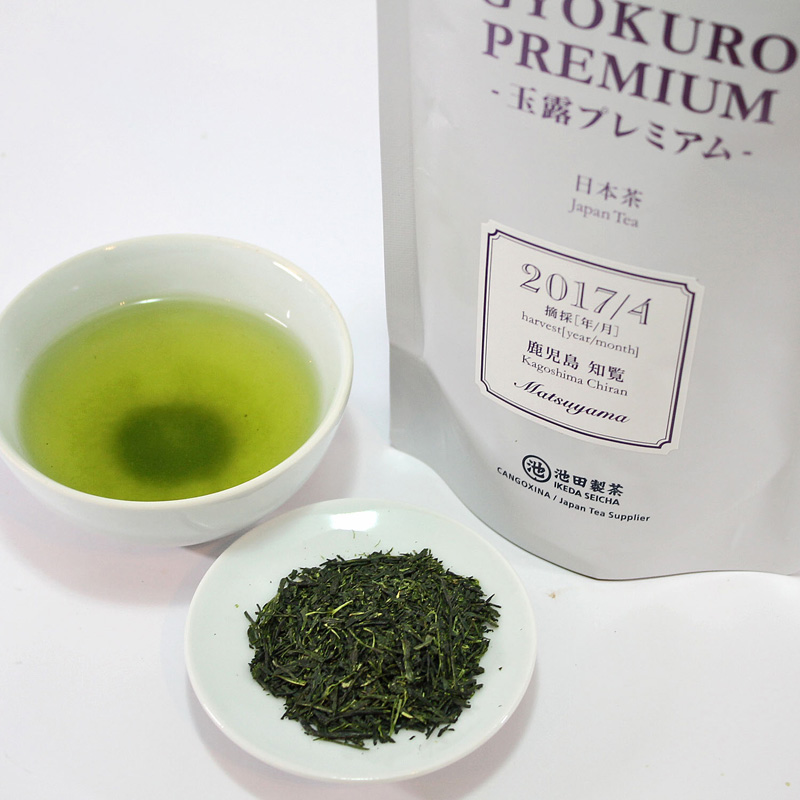
Mr. Kenta Ikeda, the representative of Kagoshima City tea merchant Ikeda Seicha, founded in 1948, has created this tea with the desire to produce Gyokuro in Kagoshima Prefecture, which is highly recognized both in Japan and abroad. Over a period of about five years, he reviewed the selection of varieties, weather conditions, cultivation conditions, and other factors, and established the know-how necessary to produce high-quality gyokuro, taking advantage of Kagoshima’s geographical location.
Gyokuro is grown under shade when the new buds are just beginning to open, and this process suppresses the transformation of theanine, a component of flavor, into catechin, which causes bitterness, so that the concentrated sweetness and flavor of the tea can be enjoyed. Ikeda Seicha’s “Gyokuro Premium” is made by aging Kagoshima-produced gyokuro for an additional year to bring out a richer, richer flavor.
Mr. Ikeda, the tea master who created this product, has obtained the highest rank of “tea judging technique 10th dan,” which is one of the most difficult skills to obtain in the tea industry. The Gyokuro Premium, created by Mr. Ikeda, one of Japan’s foremost tea experts, features the strong flavor characteristic of Kagoshima-grown tea, the mild sweetness of gyokuro, and of course, its elegant and gorgeous aroma. Try this tea when you need a pick-me-up or for a special occasion.
No. 4 Organic Oolong Tea [Takachiho Haru
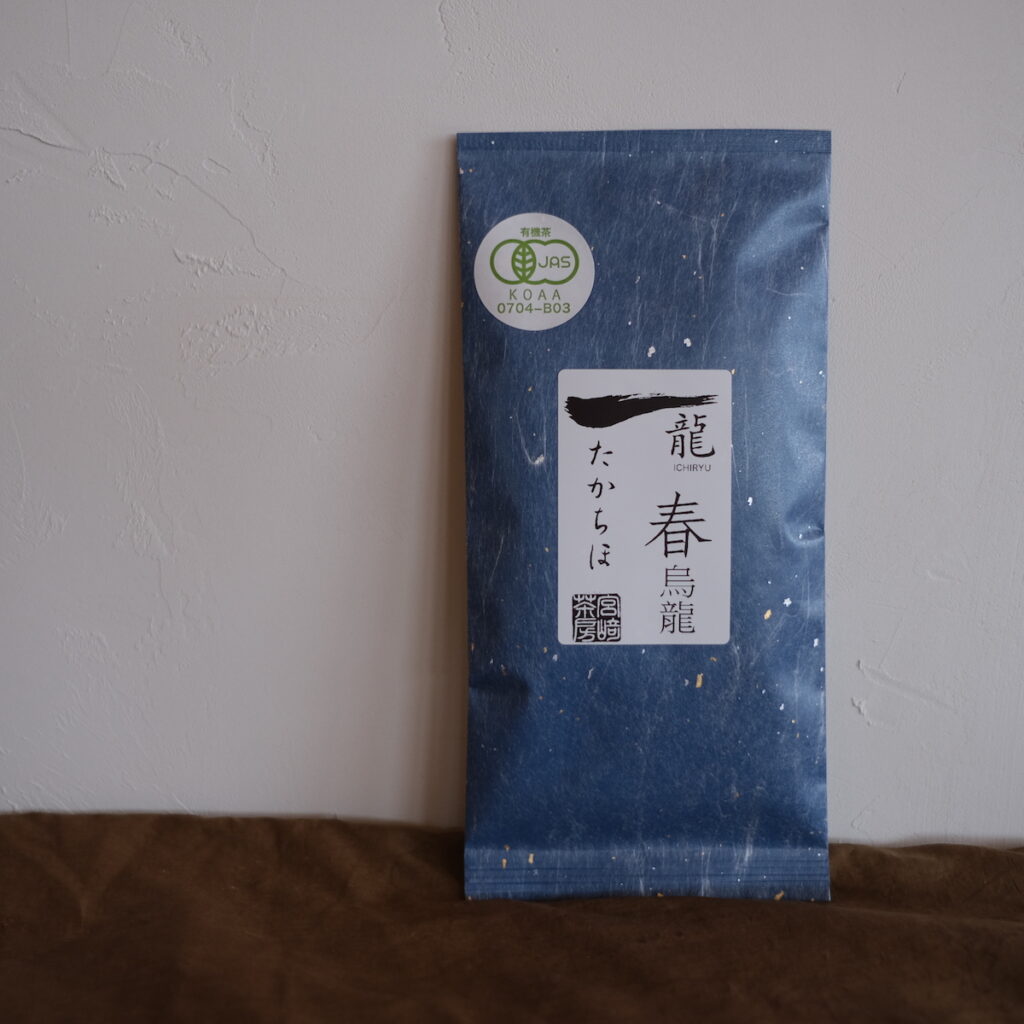
Have you ever heard of the kamabai-icha process? Most Japanese green teas are made by steaming at high temperature to stop fermentation, but instead of steaming, they are roasted in a kettle to stop fermentation.
This kamagairicha is a production method imported from China, and Gokase-cho, Miyazaki Prefecture, is known as one of the leading tea-producing areas in Japan. Most of the production process of kettle-fired tea is done by hand, and the amount of tea produced is small even in Japan because of the time and effort required. However, Miyazaki Chabo, a tea farm in the same town, produces this rare kettle-fired tea using only organic fertilizers and no pesticides or chemical fertilizers. Other popular teas include black tea, oolong tea, bancha, and blended teas, all of which are familiar to people of all ages.
The organic oolong tea is made from spring-picked “Takachiho” tea leaves, a Miyazaki Prefecture variety that was born for use in kettle-frying tea. It has a cool, refreshing flavor and is as refreshing to drink as a cup of herbal tea. It goes well not only with Chinese sweets, but also with Japanese sweets such as senbei (rice crackers) and daikaimo (sweet potatoes). The refreshing taste refreshes the sweetness in the mouth, making it perfect for starting the day, between tasks, or any time you want to feel refreshed.
No. 5 Boddhisat tea
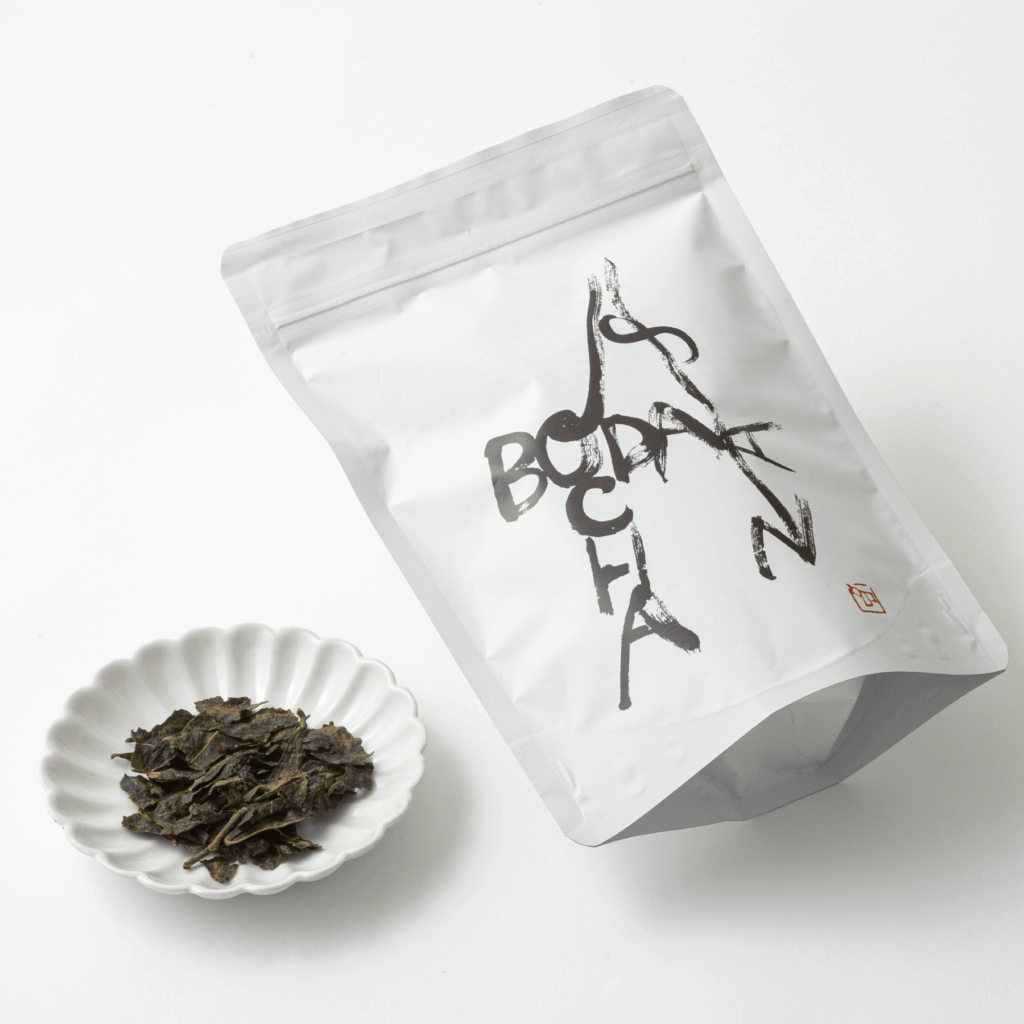
Have you ever heard of a tea called kohakko tea? It is made by heating the picked tea leaves to stop oxidation, rubbing them well, and then fermenting them with microorganisms. Pu’er tea is well-known as a Chinese tea, but there are only four types of tea in Japan (Awa Bancha in Tokushima Prefecture, Gosekicha in Kochi Prefecture, Ishizuchi Kurocha in Ehime Prefecture, and Batatabatacha in Toyama Prefecture) that are famous nationwide.
There are people trying their hand at making such post-fermentation tea in Shizuoka Prefecture, Japan’s number one tea-producing region. Mr. Kosuke Amma is the representative of Amma Seicha in Fukuroi City, Shizuoka Prefecture.
The tea has an unparalleled citrus aroma and a refreshing sourness reminiscent of freshly squeezed fruit juice. It is made by lactic acid fermentation of “kan-cha” tea leaves, which are picked in February, the coldest month of the year, in the tea fields of Toyosawa (Bodai district) in Fukuroi City, Shizuoka Prefecture, over a period of about four months. This tea has a unique flavor that makes it hard to believe that you are drinking tea, yet it is easy to drink. Mr. Amma aims to “create tea that surprises and impresses the drinker,” and we hope you will enjoy your encounter with a new type of tea never before seen.
Tile teapot “Iki Tsuki” white leaf tea set

Good tea” with a strong sweetness and flavor requires careful attention to the temperature and amount of hot water, as well as the time it takes to infuse the tea. Some people may not be confident in their ability to brew a good cup of tea by themselves. For such people, we recommend that they use the help of tools.
The aforementioned Amma Tea Company of Fukuroi City, Shizuoka Prefecture, in collaboration with a tile company, has developed a kyusu called “Suigetsu,” which is made of special tiles and specializes in bringing out the sweetness and flavor of tea.
The kyusu tiles are impregnated with carbon. Carbon is highly effective in adsorbing catechins and caffeine, which are the source of the bitterness of tea, so the functionality of bringing out the flavor and sweetness of tea was realized by adsorbing the bitter components of tea to the utmost limit.
In addition to functionality, the kyusu also pursues a design that stimulates the five senses, with a shape reminiscent of Mt. Fuji, a sound made by the sliding lid, and a touch that leaves a kawara-like surface. A kyusu is a “lifetime” tool that can be used for decades if used carefully. Why not choose a kyusu that will enrich your life?
We hope you will experience the ultimate taste of tea with the kyusu, which is designed to provide the ultimate in tea flavor, and the set of white-leaf tea included in the package.
Treasure Bottle for Tea
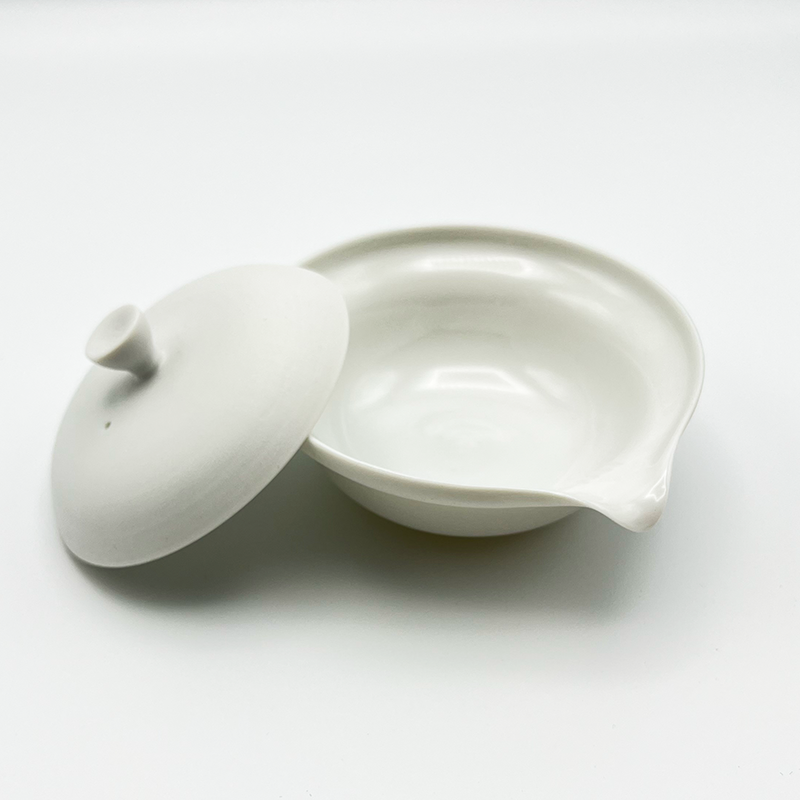
For tea lovers who enjoy tea several times a day, there is nothing more satisfying than an easy-to-clean kyusu.
The “Treasure Bottle,” created by Yuichi Murakami, an up-and-coming potter based in Toki City, Gifu Prefecture, and a tea drinker himself, is a perfect fulfillment of such a tea lover’s desire. A hobin is a tea container shaped like a teapot without a handle, and is read as “hohin” or “hobin.
The rim is made roomy to prevent it from getting hot even when boiling water is used. It can be used not only for sencha, but also for Chinese tea, which has large tea leaves and requires boiling water. The tea leaves of sencha are fine, so close the lid tightly and squeeze out the tea. For Chinese teas, the trick is to move the lid back slightly to create a gap and pour the tea quickly. This is a great item for those who want to enjoy various kinds of tea but find it difficult to prepare tea utensils specially designed for each type of tea. It can be used by everyone from the serious tea drinkers to those who are just starting to enjoy tea, and its sophisticated design is sure to lift your spirits every time you use it.
Hakuyomi porcelain teacup
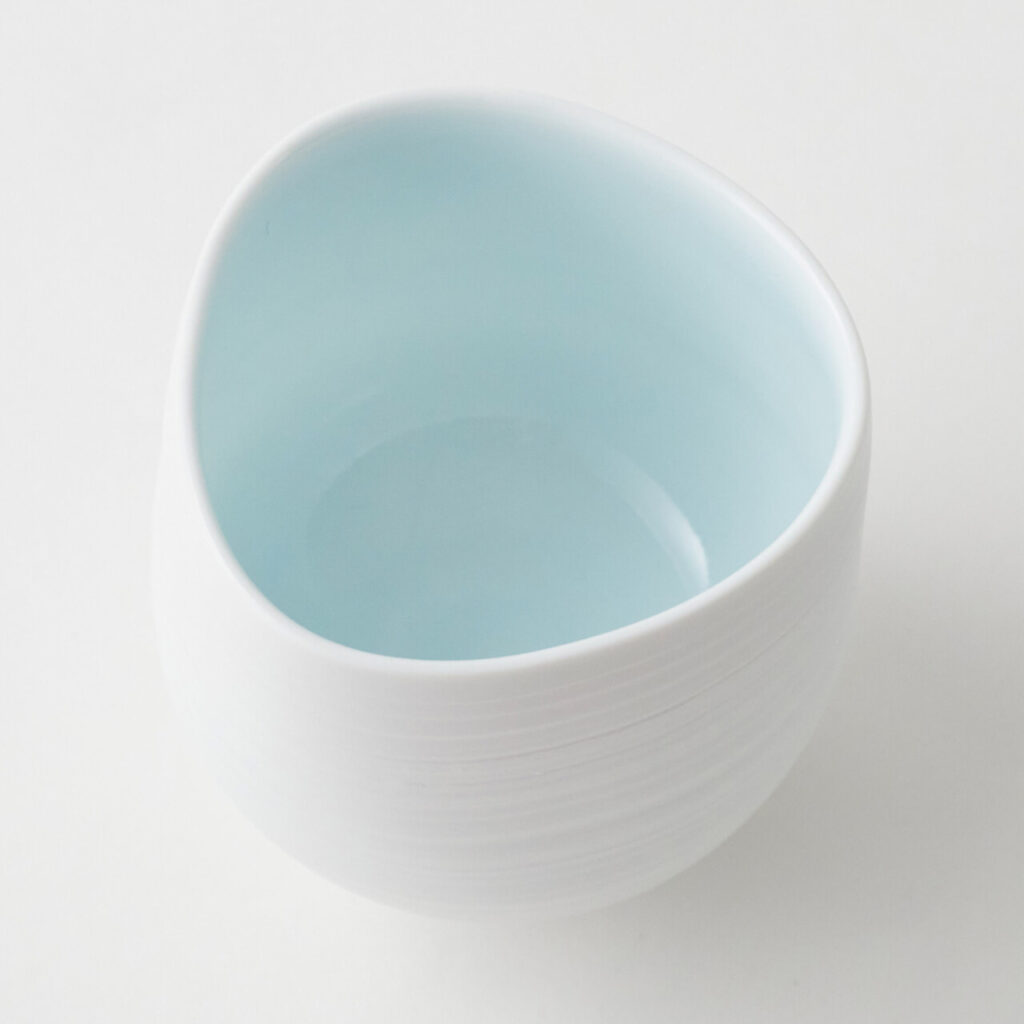
The contrast in color and texture between the inside and outside of this white porcelain teacup is eye-catching. The outside is covered with a unique white porcelain glaze with a mysterious silky sheen, while the inside is covered with a blue-white glaze with a bluish-white sheen. The green color of gyokuro or sencha tea, carefully brewed at a lower temperature, is sure to be enhanced and taste even better.
Hisaki Shomura, the sixth generation of the Banko-gama, has been making Arita-yaki in Arita Town, Saga Prefecture, since 1884, and was awarded the Grand Prize of the Ceramic Art Society of Japan at the Ceramic Art Exhibition held in 2022. His work has attracted even more attention in the world of ceramics, as his work is judged alongside that of living national treasures. Mr. Shomura’s original white porcelain “Shirotaeji” vessels have a modern impression with a mellow triangular form, as he wanted to create vessels that would blend in with modern life. The mellow, triangular shape gives a modern impression, and it gently fits the shape of the hand. The smooth and moist texture, like a baby’s skin, will make you want to use it every day.
Black Glazed Shinogi Teacup
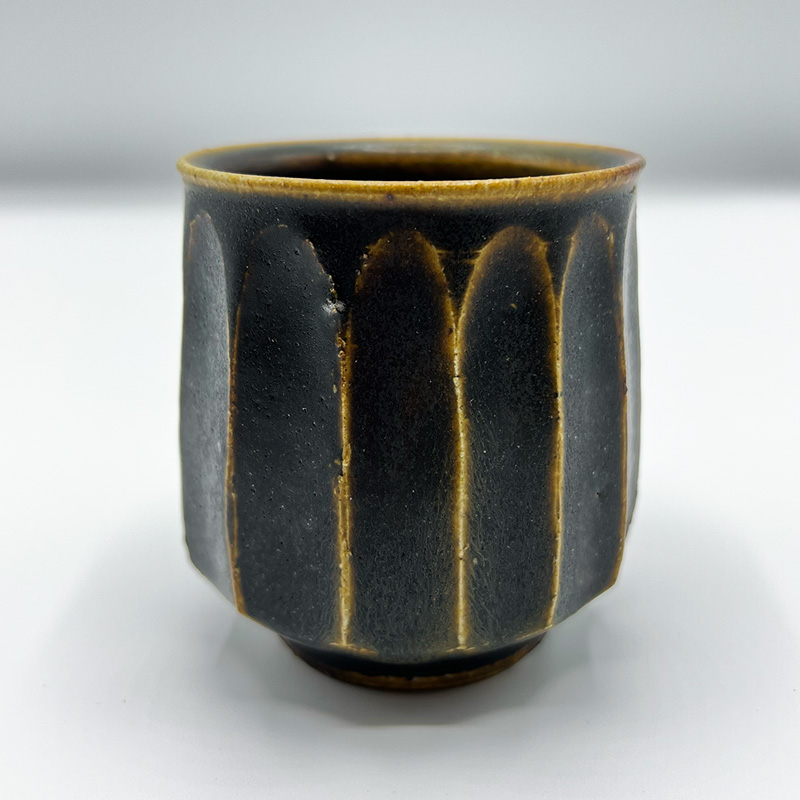
The thick form and warm black color make you want to wrap your hands around it.
Based in Shigaraki, Shiga, one of the most famous pottery production centers in Japan, this teacup is wheel-thrown into a shape that is comfortable to hold and is glazed with black glaze, a glaze that develops a black color with iron. Black glaze is a delicate glaze that depends on the firing conditions, but Mr. Furuya developed his own black glaze by studying the “Black Koryo” Tokugawa from the Joseon Dynasty and old pottery from Southeast Asia. The elegant shade of black woven into the decoration of “Shinogi,” the high, mountainous stripes on the side of the sword blade, also has a deep flavor. It is the perfect accompaniment for a moment of peace and relaxation in your daily life. Hot hojicha (roasted green tea) would go well with it.
What did you think? Did you find a tea that you would like to try, give as a gift, or visit the tea-producing region? The more you know about tea, the deeper the world of tea becomes. Once you find your favorite tea, you might want to consider the tea utensils as well.
Nihonmono will continue to provide information on tea producers and its history so that the tea culture that the Japanese people have carefully nurtured can be handed down to future generations.



